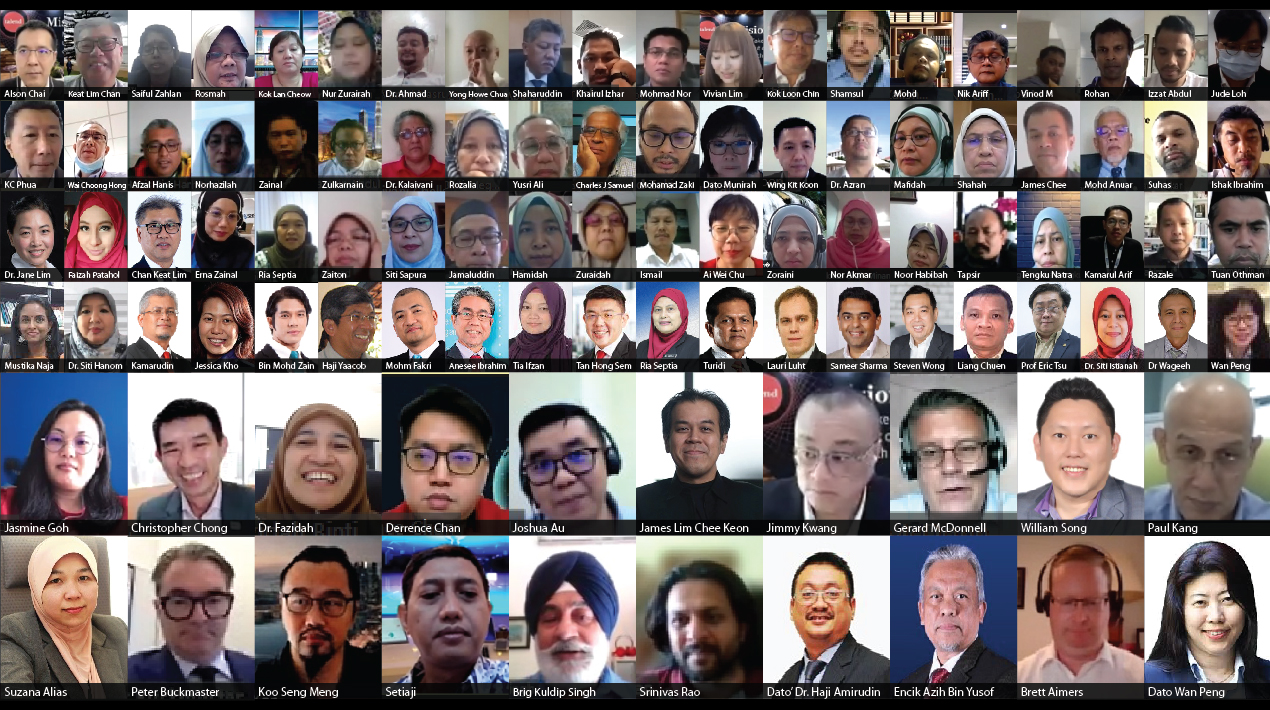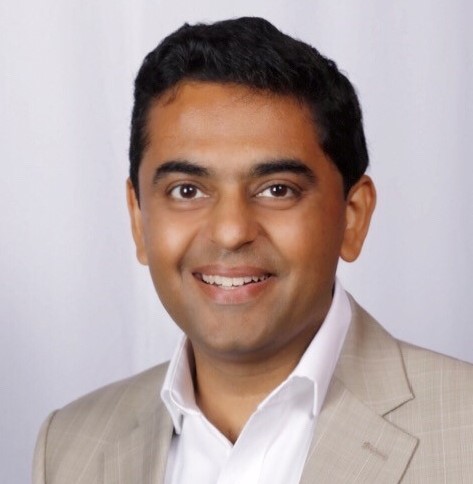
This is Part 2 of a two-part series covering the Malaysia OpenGov Leadership Forum 2021 – Virtual Edition. Read Part 1 here.
In an increasingly VUCA world, governments and businesses across the globe are looking to ramp up their digital transformation to better serve citizens and clients in the post-COVID-19 era. This was the focal point of the discussion during the Malaysia OpenGov Leadership Forum 2021 – Virtual Edition Day 2 that brought the over 100 key decision-makers and influencers together for a strategic level discussion on the issues that matter the most.
Convening the brightest digital minds for a strategic level discussion on the issues that matter the most, the Malaysia OpenGov Leadership Forum offered a unique way of tackling challenges in its virtual edition. Intentionally planned, every activity and facet of the event was designed to let delegates garner exclusive insights from the digital leaders as well as demonstrate their thought-leadership.
As always, the forum provided intimate interaction between key ICT leaders from the Public Sector and the Financial Services Industry who influence and determine digital strategies across agencies and organisations.
Apart from informative presentations from renowned speakers, this year’s Forum continued its award-winning OpenGov Gamification Table (OGT) format in the new OpenGov Gamification Virtual Rooms (OGVRs). Every OpenGov Gamification Virtual Room was a virtual heuristic exercise allowing delegates to learn from varying decision-making scenarios just as they would in the physical world.
Digital Security Landscape in the Current Environment

Continuing the lively discussion of the Malaysia OpenGov Leadership Forum 2021 – Virtual Edition, Day 2 started with a presentation from Lauri Luht, Head of National Situation Centre Estonian Government Office on the digital security landscape in the new normal.
Lauri opened by sharing some reasons why organisations may not be as resilient as they want to be. One issue is the gap between the advancement of technologies and policy. The fundamental disconnect between the position of the policymakers on why, how and what cyber resilience constitutes and the vision of technology innovators and disruptors.
Lauri felt for too many years there has been a lack of genuine focus on cybersecurity operations. Solutions involving operations, operational thinking, translations/explanations between tech and policy must all be implemented to improve overall cyber resiliency.
Additionally, governments must scale up critical security infrastructure. Even as organisations adopt a new culture with resiliency at its centre, all processes should be (re)designed to address different threats.
Another key to bridging the gap between tech and policy is education and awareness. Every stakeholder, from the policymaker to citizen must be aware of the importance of cybersecurity.
All in all, cyber defence is total defence.
Organisations can become resilient by focusing on practical organisational issues, expectations and roles of stakeholders, practical exercises and pieces of training that are scalable. The focus should be on:
- challenging themselves in areas prone to failure
- interdisciplinary measures to know which capabilities are needed
- inter-sectoral approach to determine who the stakeholders are and
- knowing the practical reasons on why and how these exercises help cyber resiliency
The end goal is to have a resilient community and a “collective brain”. Organisations must emphasise preparedness and not only prevention. It is essential to build an agile security organisation rather than following clumsy systems and principles – and innovation is the key to achieving true cyber resiliency.
Lauri acknowledged that the cyber attackers and cyber threats will not go away. Knowing this, organisations must exhaust all efforts in trying to mitigate the effects of these possible incidents. Those who are less prepared are more vulnerable.
He encouraged organisations to build international alliances and work with like-minded countries across the world. Alliances are built on practicality and not solely on declarations; further, organisations must practice transparency in all aspects.
Digital services are used by people and not by machines. Thus the goal of a transparent risk management system is to ensure that the whole of society understands the processes. If they do, they can act appropriately and with conviction. Policymakers must understand that digital matters are societal matters. Open and honest communication about risk and emergencies should be considered an asset, not a liability; problems need fixing, not hiding.
Lauri is adamant that leaders should involve stakeholders from the beginning of each process. They must do more for and ask more of their allies in the industry, build strong political engagement and commitment, and trust partners and society as nothing can be without them. Organisations need to work with society to properly tackle different threats and emergencies.
In a broader approach, cyber resiliency is not just about computer emergency. Cybersafety should be part of all security. Cyber initiatives must encompass the vulnerability of society, societal awareness and societal threats.
Concluding, Lauri acknowledged that there would always be growing complexities that result in challenges with society having growing dependencies and interdependencies. Organisations must understand that isolation is an expensive stagnation when it comes to resiliency. Knowing each other is important – as the best collective brain wins.
Smarter, Safer, and Resilient Cities: Re-opening Cities in the Face of COVID-19

After the informative presentation from Lauri Luht, the forum welcomed Sameer Sharma, Global General Manager, Smart Cities, Intelligent Transportation & IoT, Intel Corporation. His session revolved around smarter, safer, and resilient cities and the re-opening cities in the face of COVID-19.
Data clearly shows there is an explosion in populations in major cities all over the world; 55% of the world’s population lives in cities and is expected to rise to 68% by 2050. With this surge, governments have been striving to find ways to make urban systems and infrastructure more efficient and effective. However, with COVID-19 hitting the world at the end of 2019 Q4, it has created a major pause in city innovation in specific areas.
The rapid spread of the virus affected countries globally on a massive scale. It severely hit areas like trade where the value of global exports increased by 4,000% in the last century; and the travel industry where 4.5 Billion passengers boarded flights in 2019 pre-COVID. And on a personal level, human interaction was also reduced by the pandemic.
The pandemic made governments and policymakers looked at their vision for cities – such as better access to education, better healthcare and more opportunities for their citizens – in a whole new light.
Across the world, there are currently 33 megacities (>10 million people), 4,000 cities with 100K+ population and 2.5M towns. Serving this global population are 1.4 billion cars, 246 million trucks, 17 million buses, over 50,000 ships, 25,000 commercial planes and 1.3 million kilometres of railways.
All of these have to be and can be managed even in an ongoing crisis. Improving and strengthening cities where the working society is in will be the key and, in the age of COVID-19, Sameer is convinced, that resilience will be critical; new threats and challenges must be anticipated and planned for.
Agencies and organisations across the board have tried to mitigate the effects of the pandemic by using technologies and new operational frameworks. Sameer reminded the delegates that legacy infrastructure cannot scale but disruptive technologies can make everything possible. Digital technologies must overlay the physical world, especially cities.
COVID-19 created shifted the focus specific sector improvement to overall infrastructure upgrade – that is, transforming ‘spaces’ to ‘smart spaces’. It is imperative to learn how to adopt technologies like AI, Cloud, 5G and IoT.
With the re-opening of the economy, safety and sanitisation will take precedence. Automated air filtration systems will be the norm in offices, commercial spaces and industries where the physical presence of people is a must.
Organisations that use these spaces can utilise technology to upgrade their infrastructure. There is a plethora of tech-based solutions that enable smarter spaces: automated room access, keyless and touchless entry, touchless and on-demand elevators, ambient temperature control, fresh air circulation and quality monitoring, UVD disinfecting robotics, face mask and fever detection using AI, people-counting and spacing-analytics and digital contact tracing initiatives just to name a few.
With fears of the virus in public transport, for local, shorter commutes, most likely, people will use personal vehicles. Where longer travel is necessary by air, road, rail or sea, security agencies will add healthcare checks and screenings.
Schools and universities will opt to use online tools; hotels and restaurants will transition to digital menus, delivery models and contactless payments; retail will be increasingly driven online.
Intel’s Smart City Vision, Sameer shared, is built on effective policies, governance and financing. Transportation, buildings and energy, environment, healthcare, public services and homes stress citizen wellbeing and safety. Intel is a strong advocate for and champions the use of sensors and edge computing, wireless tech, access and core networks, cloud and analytics and AI and Automation to achieve their dreams of a Smart City.
Nations must understand that resiliency is the key and technology enables it. Decision-makers should think big, not just thinking about smarter cities, but better cities. The mantra is to start small and get going with obvious projects and opportunities; then learn, adjust, and iterate.
Sameer urges governments and organisations to the right partners across the industry to build sustainable cities for citizens. In closing, he quoted Nelson Mandela, “It always seems impossible until it’s done.”
Interactive Discussion
After the informative presentations from distinguished speakers and sponsors, the Malaysia OpenGov Leadership Forum 2021 entered into a time of discussion aided by polling questions.
This session is designed to encourage genuine audience participation, creating a platform where delegates can share real-life experiences and engage with subject matter experts to flesh out issues and untangle challenges. They get to take back strategies, best practices, learnings, insights and tips that they can implement in their organisations and agencies.
The opening poll inquired about delegates’ primary objective in their digital transformation journeys. Just under half (48%) of the delegates said their digital transformation is meant to improve their business processes while 41% said it is for the improvement of citizen and customer experiences.
Participants were asked how they measuring the success of their digital transformation efforts. Over half (53%) said that they are still looking for ways to measure it effectively while a third (33%) indicated they already have qualitative and quantitative methods in place.
The next question was about the biggest challenges the delegates face in implementing digital strategies. Just under a third (32%) said that legacy systems and technologies that lack integration capabilities were the biggest challenges. About a quarter (28%) signalled that inflexible business processes and teams posed the biggest challenge.
Delegates were then asked about their most important IT priorities. More than half of the delegates said that digital transformation and innovation are their top priorities while 39% said that improving efficiencies and reducing maintenance costs were the most important aspects of their IT strategies.
In terms of IT structures, delegates were asked how AI and Data Analytics impact or improve their current digital transformation strategies. Again, more than half of the delegates said faster access to data to improve pre-emptive analysis can be achieved using AI and Data Analytics while 38% said that they need AI-ready infrastructures to manage large sets of data.
Participants were requested to share their organisations’ biggest pain points in the Big Data value chain. 41% of the delegates said data integrity was their biggest pain point while 33% said data accessibility and sharing were real problems for their organisations.
When asked to rate their organisations’ use of data and data analytics tools for decision-making purposes, 43% said that it needed improvement and better tools to analyse while 33% said it was doing good and adequate tools were in place.
Differentiating cloud providers for various workloads polarised the group, with voters almost evenly divided between price, service, performance and integration.
This led to delegates being asked how much of their organisations’ mission in critical / data-sensitive workloads is to be put onto public clouds this year. Over half (54%) said that less than 40% of their workloads are set to be put onto the public cloud while a little over a third (34%) said between 50%-70% of their workloads are set for public cloud adoption.
On the issue of cloud adoption, delegates were asked about the biggest challenge CIOs face when complying with the government’s direction to go on the public cloud. Almost half (48%) agreed that security poses the biggest challenge, a fourth (23%) said governance was an issue while 15% said proper information dissimenation and advisories from the government should be made for the digital migration to work.
Delegates again equally split over the main concern for security operations in their organisations. Votes were almost evenly divided among advance and zero-day attacks, difficulties in determining actual attacks due to noise, cybersecurity skills shortages, automating responses and actionable threat intelligence.
They were asked to rate their current level of security operations efficiency to detect and respond to attacks. 39% said it is very good in terms of a partial mapping of the prediction, detection, and response areas, but it needs improvement while 34% said their security operations are currently based on log management, correlation aggregation, and basic reporting.
Delegates were also polled on what drives their cyber resilience plans. More than half of the delegates said compliance and incidents were critical factors for their cybersecurity strategies and programmes.
With COVID-19 still making its presence felt in most parts of the world, the delegates were asked about the most impacted areas affected by the ongoing pandemic. 43% said their productivity was greatly affected, 28% said the well-being of their staff was hit, while 28% said they were able to launch new initiatives because of COVID-19.
Knowing that the pandemic accelerated the digital transformation especially for the working sector, delegates were asked about their perceived outcomes of a digital and automated workplace. 45% believed that there will higher productivity in the future. Other votes were divided into greater collaborations, greater digitalisation, improved employee engagement, and resource savings.
One being asked about the current challenges they face in the adoption of a digital workplace, 42% said the lack of executive leadership to drive a culture of process improvement and effective change management is their biggest challenge. 39% said the lack of effective technologies to optimise staff productivity and performance is an issue. Just under a fifth (19%) said no clear articulation of digital workplace benefits and a supporting business case hinder their adoption of the new working setup.
Lastly, the delegates were polled about their organisations’ capabilities in supporting a remote workforce. 42% said they already have the tools to implement seamless remote working setup. 40% said there is a lack of collaboration tools for seamless remote work, but they are looking for solutions. Only 18% said they are not looking to implement a fully remote workforce.
Public Services in New Normal: Time to Recharge, Reinvent, Reimagine and Reinvigorate

Mohit joined Ng Wang Peng, Koo Seng Meng and Brett Aimers in the Power Talk session to discuss how organisations and the public sector recharge, reinvent, reimagine, reinvigorate and reboot their services in the new normal.
Ng Wang Peng, Former Chief Operating Officer Malaysia Digital Economy Corporation, believes that collecting a lot of data must be prioritised when moving to the digital space. She believes both the public and private sectors should be more responsible in terms of managing the data they are collecting because proper data collection and data integration will be key moving forward.
Koo Seng Meng, Senior Deputy Director, AI Innovation, Singapore said that organisations should never let a good crisis go to waste. With COVID-19, all sectors across the world have found new initiatives and new thinking that will help propel them in their digital transformation journeys.
Brett Aimers, Adjunct Associate Professor, James Cook University Australia said it was important to not forget the lessons learned in the COVID-19 era. That knowledge must be used to improve health responses, flexible working setups, as well as trying to find innovative ways to grow as a society.
Conclusion:
The Malaysia OpenGov Leadership Forum 2021 Virtual Edition ended with the closing remarks from Mohit. He strongly felt that organisations both from the public and private sectors should take care of their people – employees, citizens and customers should be at the top of their agendas.
Governments and organisations should be mindful of this new environment while finding the right balance between technology and innovation. Retaining lessons from the pandemic will be vital moving forward. Though there is a lot of unknown factors, COVID-19 taught us that we can provide platforms and programmes for us to adapt to new demands.
This is Part 2 of a two-part series covering the Malaysia OpenGov Leadership Forum 2021 – Virtual Edition. Read Part 1 here.
















